
Experiencing a sunrise or sunset up close and personal, or witnessing nature’s beauty from a bird’s-eye view, is truly invigorating. To fully immerse oneself in the wilderness of California, spending a few days in a U.S. Forest Service lookout tower high above the forest floor is the way to go.
One of California’s best-kept secrets, these towering 60-foot structures provide campers a private place in the woods far away from city lights.
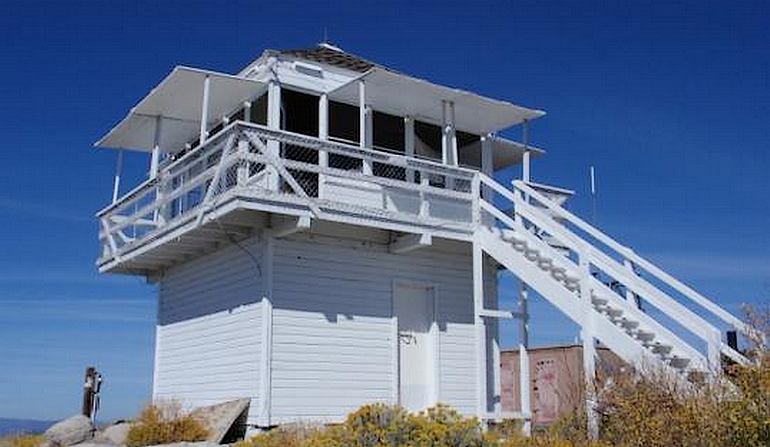
Once used by the forest service to spot fires in the backcountry, many lookouts throughout the state have today been transformed into primitive wilderness motels, offering jaw-dropping 360-degree views of the surrounding landscape while providing a unique camping experience.
These treehouse-style escapes for grown-ups are not luxurious; they are downright primitive, as most do not have running water, hot showers, or flush toilets. Lookout towers cost as little as $40 a night. If you want a more comfortable California camping experience, try a rustic cabin for about $75.00 a night.
What To Bring on Your Trip
Campers will need to carry their water for cooking, cleaning, and personal grooming, as well as being prepared to pack in their own sleeping and food preparation gear, as many towers only contain simple furnishings, including costs, a few chairs, and if lucky — a propane camp stove.
Relatively small in size, ranging from less than 100 to no more than 300 square feet, most of these lookouts are located atop steep granite peaks and ridgelines usually only accessible by dirt roads. So it’s suggested that campers check ahead to see if they require a four-wheel drive, especially during the rainy winter months.
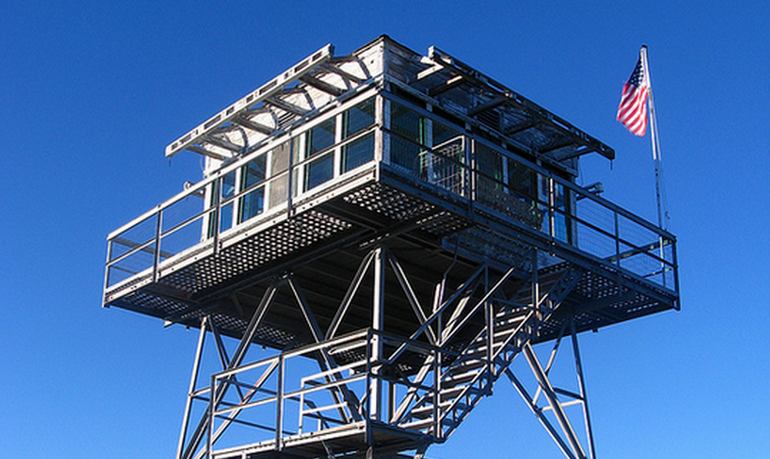
Finally, at some sites, a flat tent is available adjacent to some of the lookout towers for families, so parents get the cots in the tower while kids get the tent outside.
But what about those that are looking for an experience less primeval? No problem, as several rental cabins offer convenience and comfort in a beautiful outdoor setting.
Tower Features
Standard features include kitchens with basic amenities and sometimes utensils, regular beds, heating, and in most instances, running hot and cold water and electricity.
Campers will still need to bring their camping gear, however, like sheets and pillows, but can choose at some sites, the Total Camping Packages add-on, which includes sleeping bags, a cookstove, pots, and pans, cooking utensils, a lantern, and a 60-quart cooler.
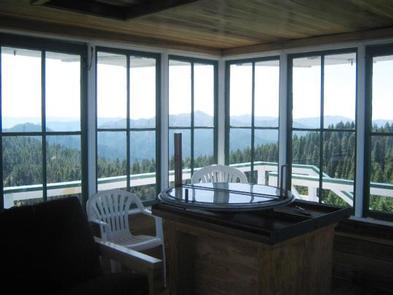
Bear Basin Lookout and Cabin
They are located in Northern California inland from Crescent City. Up to eight guests can use the cabin and tower. The cabin has a kitchen with three double beds, are there is a futon in the lookout tower. Six Rivers National Forest.
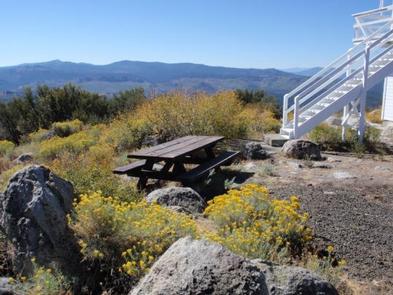
Black Mountain Lookout
Tower Northern California near Honey Lake. Sleeps four on the lookout, and you can also pitch a tent for more guests. An advantage of only being ten feet high is no steep climbing stairs. Overlooks the Plumas National Forest. Access to the cabin is by dirt road. Plumas County, California.
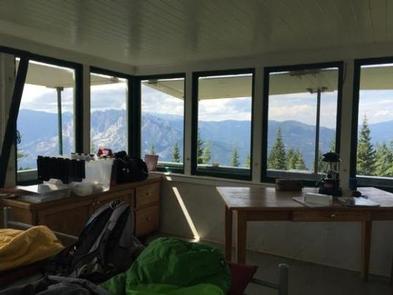
Girard Ridge Lookout
Views of the mountains reward rustic at best, but campers during the day and starry skies at night. Lookout stands only 13 feet off the ground for easy access. The maximum capacity is four campers. Shasta-Trinity National Forest
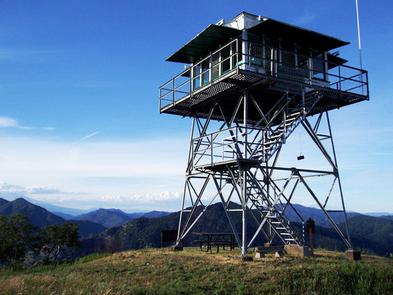
Hirz Mountain Lookout
Located at 3,540 feet, the tower offers fantastic views of Mt. Shasta. Sleeping for up to four persons, however, no cooking facilities, water, or electricity. You must bring everything over some rather steep logging roads, but that’s half the fun.
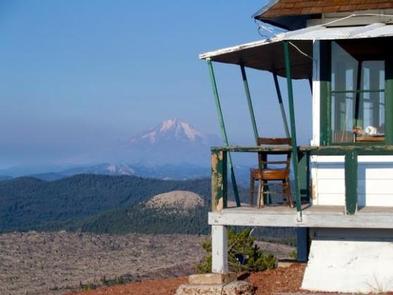
Little Mt. Hoffman Lookout
It was built in the 1920s in the Shasta-Trinity National Forest. This lookout only has a few steps to climb into its 14×14 interior. The maximum capacity is four campers, and access is relatively easy on graded forest service roads.
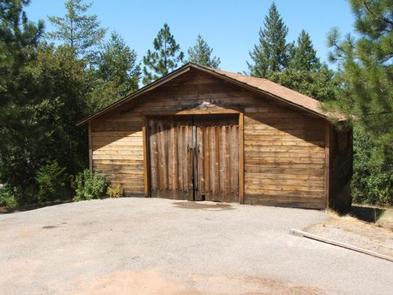
McCarthy Point Lookout
A cabin with a view built-in 1936 was used for spotting wildfires. The lookout is a two-room cabin with a kitchen and a bedroom with spectacular views of Northern California’s Ishi Wilderness. Accessible by high-clearance vehicles.
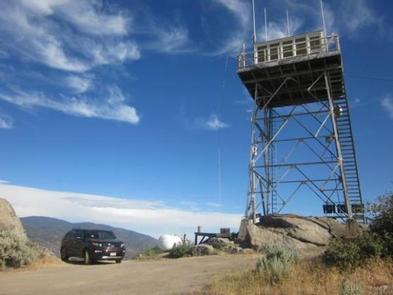
Oak Flat Lookout
Greenhorn Mountains in the Sequoia National Forest. Located at an elevation of 4,900 feet, the tower overlooks the
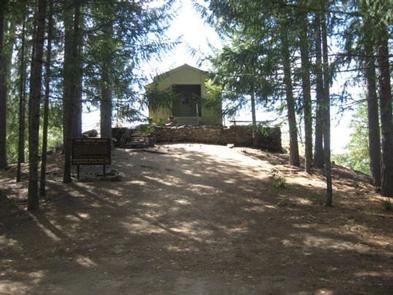
Pine Mountain Lookout
A big plus is you can reach this one by car. Open from May through October, Pine Mountain sleeps six people and has a 2-night minimum stay: picnic table, fire ring, grill, and a vault toilet. Mendocino National Forest.
California Guard Station Cabins
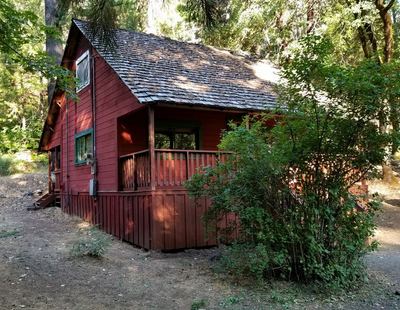
Forest Glen Guard Station
This is a luxury compared to lookout towers: kitchen area stove and refrigerator and an indoor bathroom with a flush toilet. Accommodate up to eight people in the cabin. Shasta-Trinity National Forest.
Mountain Home Guard Station
Sequoia National Monument in the Sequoia National Forest. It was used as a residence for Forest Service fire patrolmen. Maximum occupancy to 10. All the creature comforts of home except electricity.
Poso Guard Station Cabin
Sequoia National Monument in the Sequoia National Forest. One-story, one-bedroom cabin sleeps five and offers electricity and hot and cold running water—a hotel room in the California wilderness.
Post Creek Guard Station
Northern California Hayfork Area of Shasta-Trinity National Park. 19×30 cabin accommodates up to eight people and has two rooms—no water or electricity. Roads are good enough that you can get to the cabin by car.
Sly Guard Cabin
Eldorado National Forest is not a remote location suitable for families with kids. Six hundred square feet and sleeps four people, with room for more campers to set up tents outside: electricity, water, a wood stove, and a propane wall heater.
Getting to the Lookout Towers
Lookout towers are almost all located in remote areas of the state. Getting to them can be difficult and require a four-wheel-drive vehicle or hiking. Guard and rustic cabins can be situated in hard-to-get locations. However, some have easy access. Reservations for lookout towers and cabins can be made through Recreation.gov.
Finally, while most lookout towers and cabins are available year-round, please remember when booking that some are not available to rent during the summer months as the forest service still uses them.
Leave a Reply